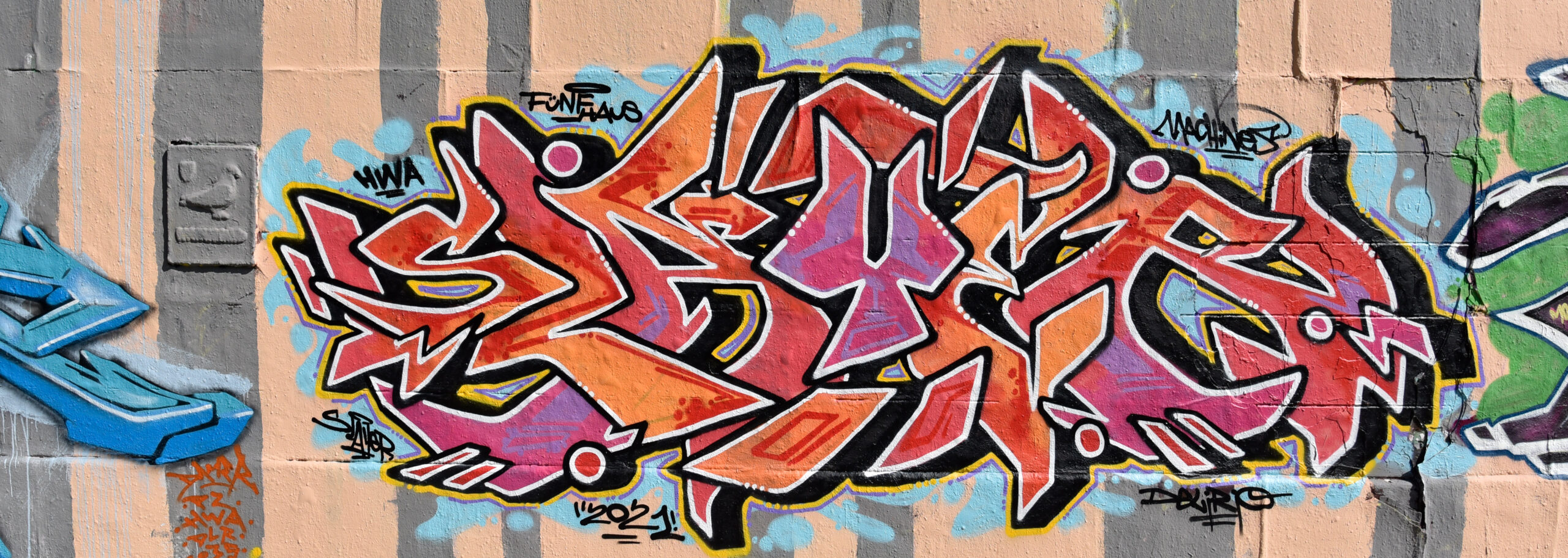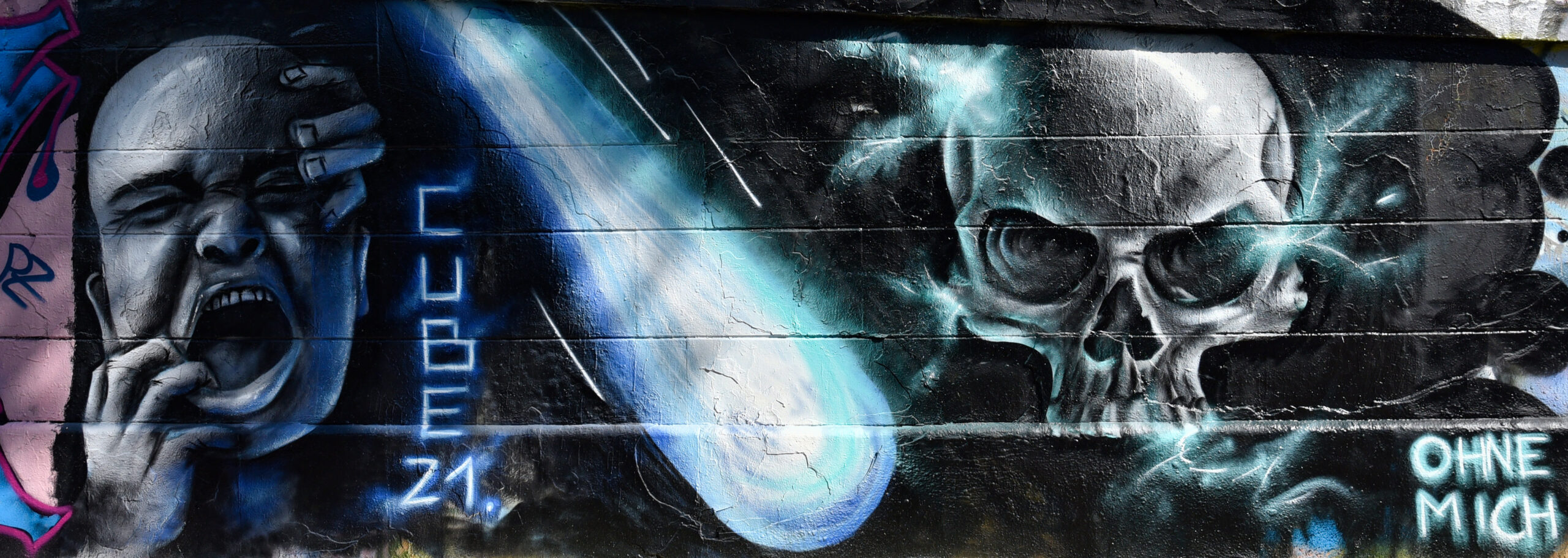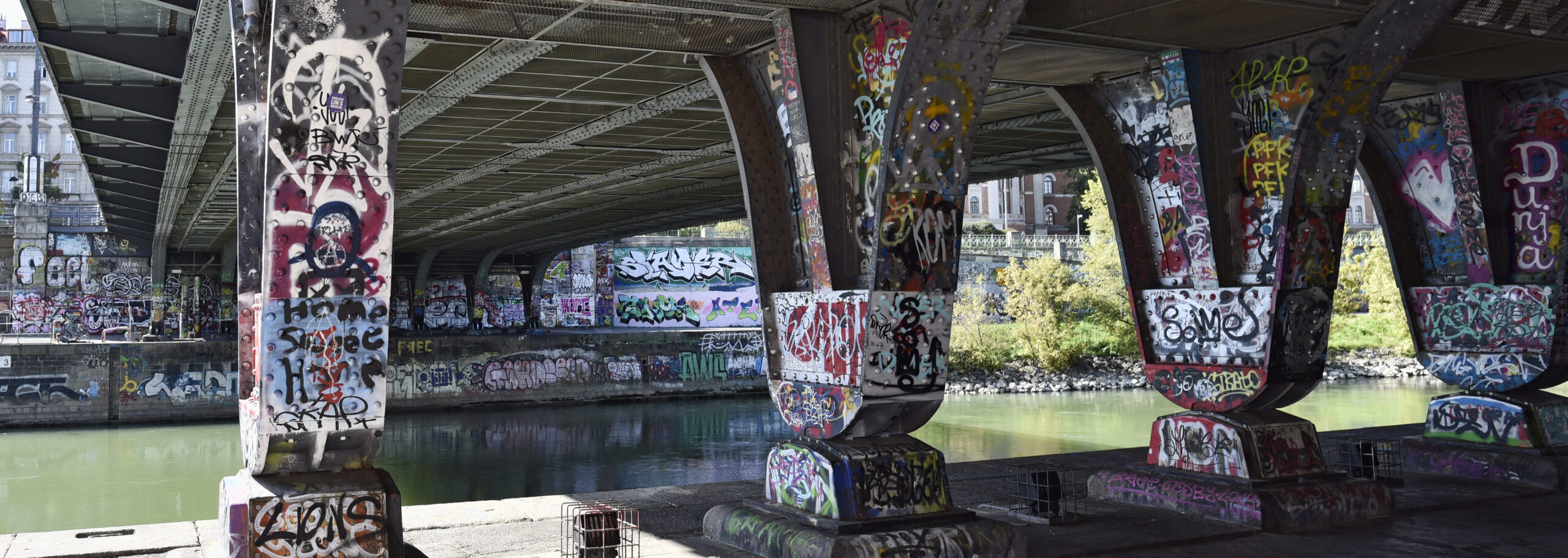
Graffiti and street art are multifaceted, ‘self-authorised’ (Blanché, 2015) forms of personal expression that exploit the public space using a visual intervention. Graffiti and street art have found their detractors and admirers, their collectors and destroyers, and even their superstar artists. In the past three decades, there has been a considerable expansion of the techniques in which ‘artists’ express themselves in the public sphere: from graffiti writing to murals, cut-outs, stencils and stickers (Monschein-Oberreither, 2019).
This ever-evolving nature and constant need to reinvent itself are characteristic of graffiti and street art (Kimvall, 2014; Lewisohn, 2009), but they also explain the lack of scholarly agreement on the scope of these terms. For example, the American artist John Fekner described street art as “All art on the street that’s not graffiti” (Lewisohn, 2009). In contrast, others state that “Street Art cannot be defined conclusively since what it encompasses is constantly being negotiated” (Bengtsen, 2014). Such conceptual distinctions do not guide this project. INDIGO considers ‘graffiti’ to include all possible sprayings, engravings, and other personal expression works attached to public urban surfaces in legal or illegal ways.

This definition allows to state that graffiti has been created for millennia (Lohmann, 2018; Lovata and Olton, 2015). Despite its long history, the phenomenon remains fascinating and disputable because it continually fluctuates between tangible and intangible heritage, between vandalism and art, between graphical and textual, between legal and illegal, between pleasingly acceptable and socio-political criticism.
All these contradicting features are also found along the Donaukanal (Eng. Danube Canal) in the city centra of Vienna. The public surfaces surrounding this central waterway constitute a graffiti hotspot since the early 1980s (Ringhofer and Wogrin, 2018). Initially, only one area allowed graffiti, but graffitist conquered almost all surfaces in the last two decades.
Almost every day, new graffiti appears along the Donaukanal. However, a graffito’s mere creation automatically implies the (complete or partial) destruction of one or more existing graffiti beneath. Although graffiti is subject to post-depositional processes in ways similar to archaeological sites and landscape formation, pre-existing graffiti never gets ‘excavated’. They become a lost and forgotten part of the Anthropocene’s global stratification (Edgeworth et al., 2014).

This project wants to safeguard this unique, complex, ever-changing and socially interesting cultural heritage that flanks Vienna’s central waterway. More specifically, INDIGO focuses on nearly 13 km of continuous graffiti-covered urban surfaces between the Friedensbrücke and Verbindungsbahnbrücke: 5.3 km on the left and 7.6 km on the right bank. Circa 2/3 of these surfaces are formed by walls, staircases, bridge pillars and ramps surrounding the Donaukanal. However, 4.4 km of this graffiti-scape are found just above the water level on the concrete embankments that contain much of the channel. Strikingly, graffiti are only legal over a combined stretch of less than 300 m.
In this diverse research zone, INDIGO operates with three central aims:
Because the database represents a spatio-temporal inventory of all graffiti, the project is labelled INDIGO: IN-ventory and DI-sseminate G-raffiti along the D-O-naukanal. Although INDIGO is currently only funded for two years (from September 2021 until August 2023), the idea is the establish the foundations for a long-term, accurate and exhaustive, open access and interactive graffiti archive that can be extended into the next decade. Even if, against all odds, INDIGO would not secure additional funding, its spirit will live further through Stefan Wogrin’ SprayCity, which could also feature standardised metadata from that point onwards. Simultaneously, INDIGO could also turn into a crowdsourced project.
The following section covers the 5 research pillars upon which the whole project is based.
